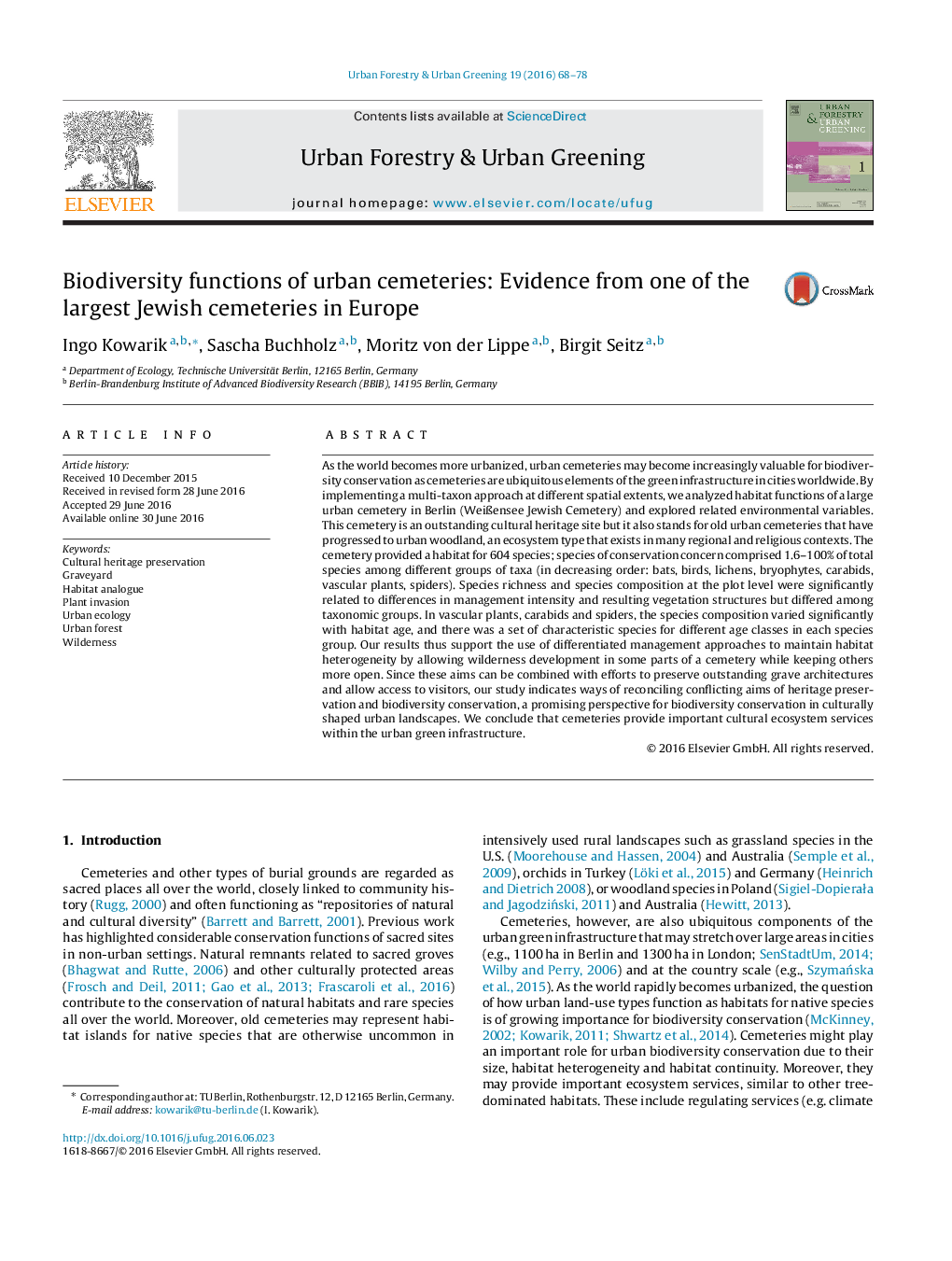| Article ID | Journal | Published Year | Pages | File Type |
|---|---|---|---|---|
| 93916 | Urban Forestry & Urban Greening | 2016 | 11 Pages |
•First multi-taxon study of flora and fauna in a large urban cemetery.•Important habitat functions exist for animal and plant species of conservation concern.•Habitat age and management intensity affect species assemblages.•Management approaches can reconcile biodiversity and heritage conservation.
As the world becomes more urbanized, urban cemeteries may become increasingly valuable for biodiversity conservation as cemeteries are ubiquitous elements of the green infrastructure in cities worldwide. By implementing a multi-taxon approach at different spatial extents, we analyzed habitat functions of a large urban cemetery in Berlin (Weißensee Jewish Cemetery) and explored related environmental variables. This cemetery is an outstanding cultural heritage site but it also stands for old urban cemeteries that have progressed to urban woodland, an ecosystem type that exists in many regional and religious contexts. The cemetery provided a habitat for 604 species; species of conservation concern comprised 1.6–100% of total species among different groups of taxa (in decreasing order: bats, birds, lichens, bryophytes, carabids, vascular plants, spiders). Species richness and species composition at the plot level were significantly related to differences in management intensity and resulting vegetation structures but differed among taxonomic groups. In vascular plants, carabids and spiders, the species composition varied significantly with habitat age, and there was a set of characteristic species for different age classes in each species group. Our results thus support the use of differentiated management approaches to maintain habitat heterogeneity by allowing wilderness development in some parts of a cemetery while keeping others more open. Since these aims can be combined with efforts to preserve outstanding grave architectures and allow access to visitors, our study indicates ways of reconciling conflicting aims of heritage preservation and biodiversity conservation, a promising perspective for biodiversity conservation in culturally shaped urban landscapes. We conclude that cemeteries provide important cultural ecosystem services within the urban green infrastructure.
Graphical abstractFigure optionsDownload full-size imageDownload as PowerPoint slide
